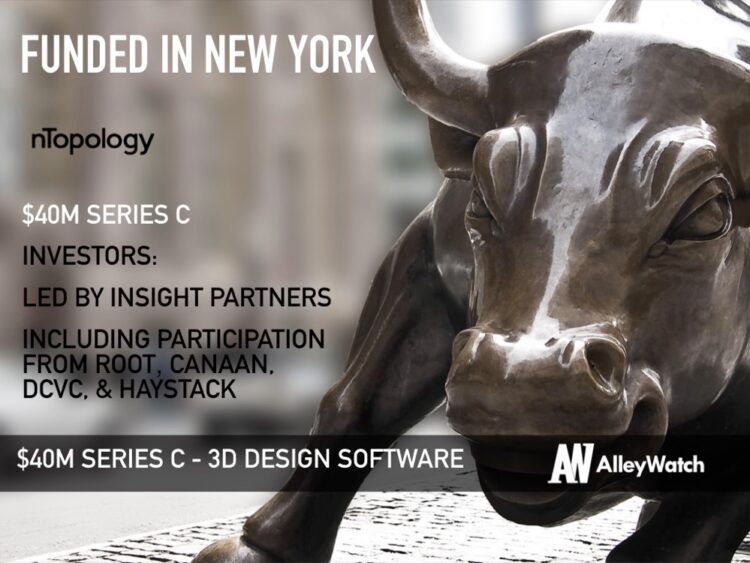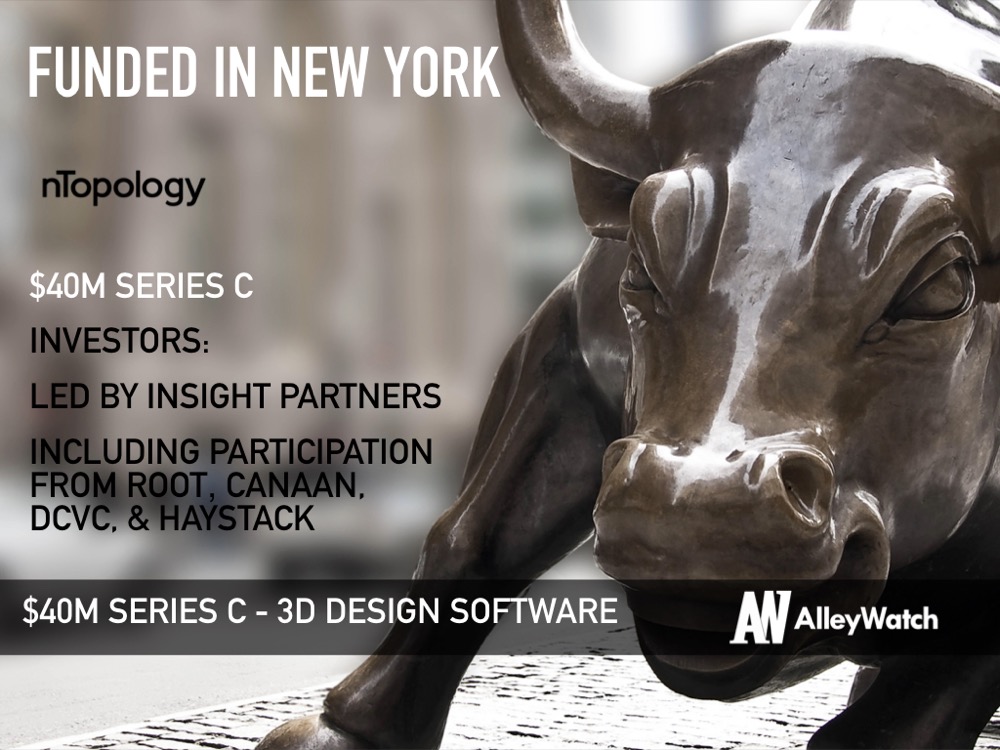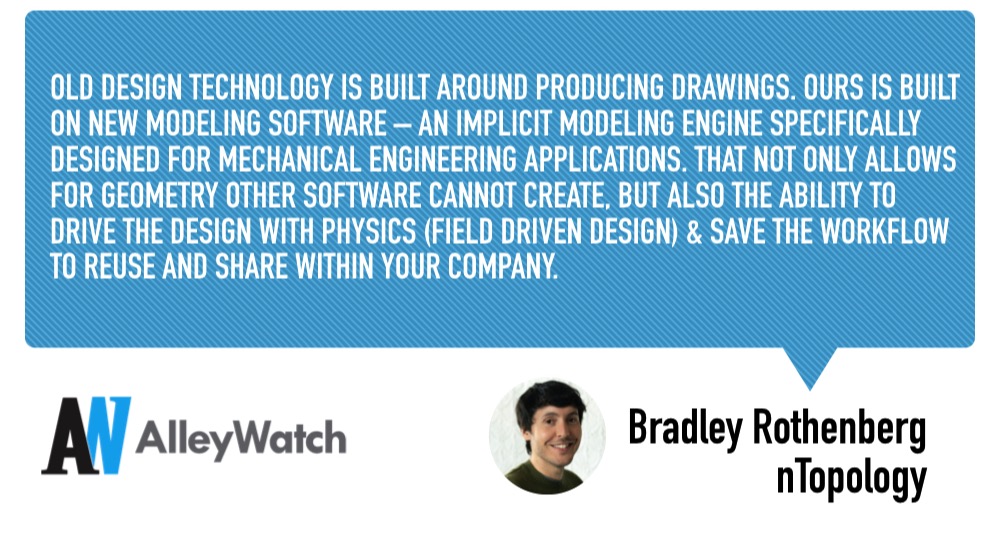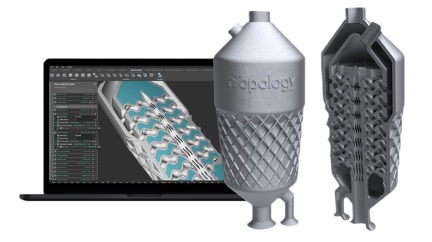Additive manufacturing has disrupted the entire manufacturing process paving the way for the rapid adoption of 3D printing to create stronger, lighter, more complex parts and systems. nTopology is the first engineering design software built natively for this shift. The company’s nTop platform, launched last year, accelerates the design process through reusable workflows, allowing design teams to model different materials virtually rather than with having to build multiple prototypes. Engineers can now run 3,000 possible iterations in an hour. Used by engineers working in a range of industries from aerospace, automotive, medical, and consumer products industries, the platform can run 3,000 possible iterations in an hour. Within the next 5 years, engineering companies will shift production of 30% of all parts to additive or advanced manufacturing processes. nTopology customers include organizations like GE Health, Renishaw, U.S. Airforce, and Lockheed Martin. Despite the pandemic, the company is on pace to triple its YOY revenue in 2020.
AlleyWatch caught up with CEO Bradley Rothenberg to learn more about nTopology, how the nTop Platform supports generative design and 3D printing, and the company’s latest funding round, which brings total funding raised to $70.2M across four rounds.
 Who were your investors and how much did you raise?
Who were your investors and how much did you raise?
This is our Series C of $40M led by Insight Partners with our previous investors Root, Canaan, DCVC, and Haystack also participating.
Tell us about the product or service that nTopology offers.
nTopology is an engineering software company and was founded in 2015. It’s headquartered in New York City in the heart of Manhattan. In 2019, we launched nTop Platform to empower engineers to design revolutionary products. Today, our software is used at hundreds of engineering companies by thousands of engineers on their most advanced projects in the aerospace, automotive, medical, and consumer industries.
What inspired the start of nTopology?
We started nTopology right when manufacturing was going through what we thought was the most important transformation in the last 100 or so years: this was the shift to additive manufacturing. Anytime there is a major platform shift in the way we as humans can manufacture parts, there is a new set of processes & design systems built to enable this technology. At the time, the design software on the market was built on technology developed in the late 70s early 80s before additive manufacturing & was not capable of designing the types of parts that maximize the potential of additive manufacturing (you can see examples of these parts on our website under case studies). At first, we wrote custom code to trick other software to create these geometries, but it quickly became obvious we needed to start from scratch, with a new way of describing geometry that unlocks the potential of these processes by enabling unlimited complexity, field-driven design, & remixable workflows.
How is nTopology different?
Old design technology is built around producing drawings. Ours is built on new modeling software – an implicit modeling engine specifically designed for mechanical engineering applications. That not only allows for geometry other software cannot create, but also the ability to drive the design with physics (field-driven design) & save the workflow to reuse and share within your company.
What market does nTopology target and how big is it?
We are targeting the design for an advanced manufacturing market that is relatively small compared to traditional manufacturing in many sectors but in leading verticals such as Aerospace, Automotive, and Medical it is quickly becoming a bigger proportion of a massive market.
What’s your business model?
nTopology sells software on a yearly recurring basis, per user (engineer).
How has COVID-19 impacted the business?
Covid-19 has made us drastically address how we engage with customers and sell, in a good way. The move to remote has made us incredibly more efficient at communicating directly with customers, forced us to create educational content that we can reuse and is scalable rather than physically redo training for every customer. Basically, it forced us to do things the way we should have been doing them from the beginning. (But we do still miss socializing with our customers and partners and getting to know them a little better as people).
What was the funding process like?
The process was ~three weeks to sign terms. I kicked off the process by only talking with investors that I had existing relationships with, since the entire process was run from my balcony in NYC over zoom & knew that meeting in-person was impossible. Originally, we were looking to raise $30M but with the increase in sales since the start of the pandemic, we decided to take on even more funding. It was nice to not have to schlepp between SF & Sand Hill for a week straight which is exhausting.
What are the biggest challenges that you faced while raising capital?
There was a lot of uncertainty when we began the process as the Pandemic quickly defined our lives. We knew we had the metrics and traction to go out and raise, but we were less certain on how the VC community was going to respond to raising during the pandemic when thousands of people were getting sick every day.
What factors about your business led your investors to write the check?
2019 showed really good growth, and then Q1 and Q2 accelerated even faster – we had our best two quarters irrespective of the pandemic as our software entered a more mature phase, Our customers are making some of the most important products for humankind, so trust is critical in deploying a new engineering software. We have earned that trust.
However, we did see cuts at some of our customers, but, when we reached out to check in with our contacts we learned that the old legacy systems were being cut, advanced design and manufacturing was getting even greater assignment of resources, which was a good signal for our business.
What are the milestones you plan to achieve in the next six months?
We plan to triple last year’s revenue by the end of the year, continuing to land and double new accounts and expand within existing accounts.
What advice can you offer companies in New York that do not have a fresh injection of capital in the bank?
I think the best advice is to stay focused on achieving product-market fit before putting more resources to work. With the pandemic, I think it has forced us all to take a deeper look into how we work with one another, & have made us all more empathetic & open to new ways of working (more remote vs in-person work, etc.)
With the pandemic, I think it has forced us all to take a deeper look into how we work with one another, & have made us all more empathetic & open to new ways of working (more remote vs in-person work, etc.)
Where do you see the company going now over the near term?
We will continue to develop nTop platform as the leading software for realizing the max potential of advanced manufacturing – unlocking value through speed and efficiency, not just in the design process, but also in the products they create for their customers, adding value all the way along the chain. We are enabling products to be designed that will ultimately have a net positive effect on humanity, for example in the transition to sustainably-powered vehicles.
What’s your favorite outdoor dining restaurant in NYC?
I have been enjoying biking out to Brighton Beach all summer, stopping at my favorite restaurant, Stolovaya, for sour cherry kompot and dumplings. They don’t have outdoor seating though yet, but they should. Additionally, I really like the desserts at The Little One, a small Japanese style dessert stop on East Broadway & Essex, I usually order the cardamon iced chocolate.






